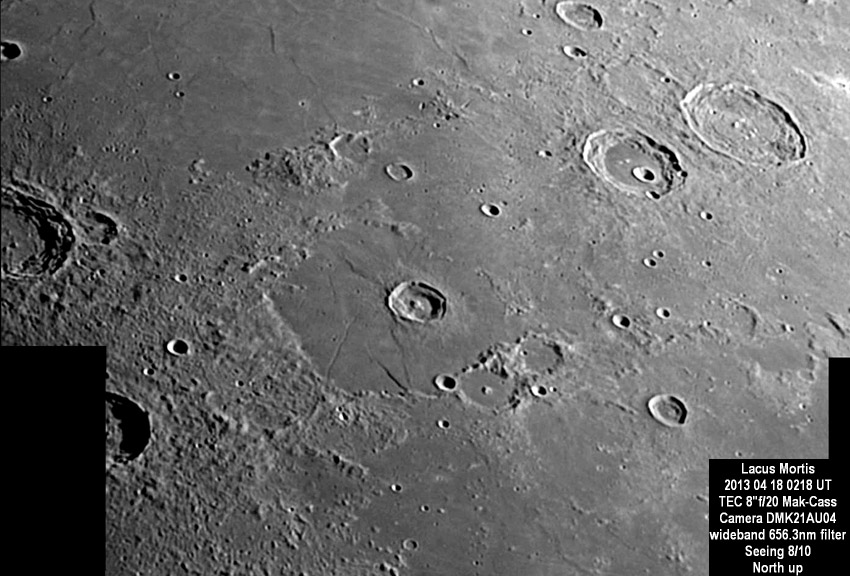April 1, 2023
Mortified Faults
Originally published May 8, 2013

image by Rik Hill, Tucson, Arizona
Lacus Mortis is a weird feature. It is quasi-polygonal in outline and about 160 km in diameter. It doesn't have much of an elevated rim, and on the west, Imbrium ejecta seems to drape over the edge. Any ejecta that was deposited on the crater floor is covered by lava that completely infills the crater that originally must have been about 5-6 km deep. The lava may have risen up fractures under the floor or perhaps flooded in from the east where the rim is broken. The surface of the lava is crossed by a variety of faults. The most unique is the informally named Lacus Mortis Fault or the Bürg Fault that is about 350 m high at its southern end and declines toward zero to the north. A very subtle rille continues the Bürg Fault pass the Bürg Rille and bends parallel to the northwest wall of the lacus. QuickMap shows other faint rilles in this area. I was surprised to see that the official IAU map of this region shows that the Bürg Rille name includes both the segment of the roughly linear rille that crosses the lacus as well as its apparent continuation into the rubbly ejecta to the southwest. This 4 km wide rille is actually two faults that face each other, with the surface in between down-dropped about 70 m. The LRO QuickMap suggests that the rille also continues to the northeast, being buried by Bürg's ejecta. The final faults cutting the floor of Lacus Mortis are the low angle faults that formed the mare ridges. We often don't think of mare ridges as faults but they are.
Chuck Wood
Technical Details
The 5 images that made up this montage were stacked 300/1500 using Registax 6. Further procesing was done with IrfanView and GIMP and final assembly was done with AutoStitch.
Related Links
Rükl plate 14
21st Century Atlas chart 10.
Yesterday's LPOD: Rows of Domes
Tomorrow's LPOD: Positive About Negative
COMMENTS?
Register, Log in, and join in the comments.



